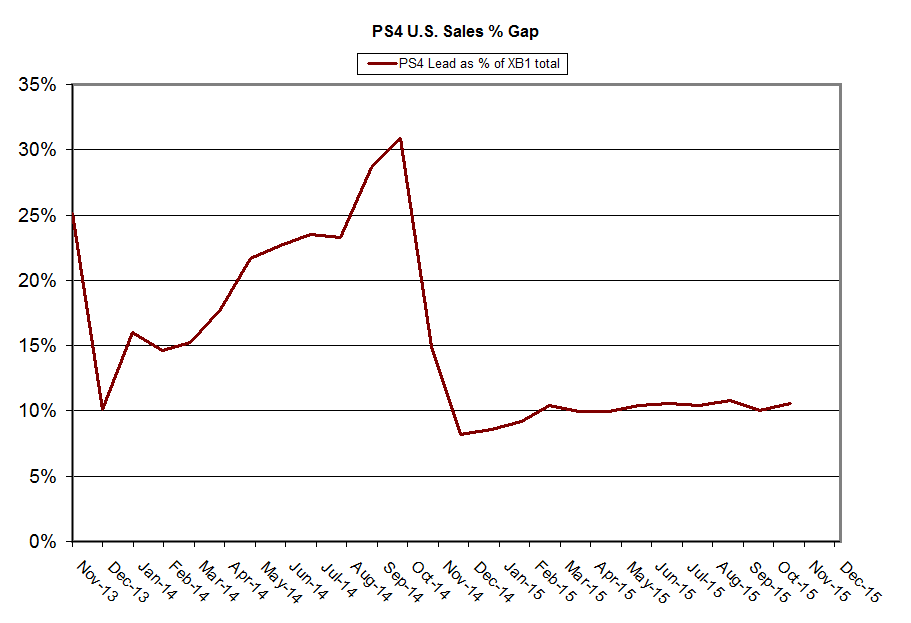Hey, sorry I'm so tardy — holidays — but I wanted to say this was super helpful! <3 Sorry, I got thrown off when simplayer labeled both values "x" and I thought we were plotting them on the same axis. This makes way more sense though. lol
All r-squared really does is explain how much of a change in X can be explained through changes in Y. In this case, the data suggest that 96% of the change in Physical SW Spend can be explained by changes in Physical Title Count.
Gotcha, and thanks again. What does "r-squared" actually mean? It not referring to the radius, obviously…
In order to use tie ratios appropriately for this math, you would need to measure only that portion of the installed base that was active. However, the active installed base for any platform over any time period is impossible to know. For example, in 2015, a vast majority of software sales are being done on PS4 and Xbox One, yet a majority of the installed base is still PS3, Xbox 360 and Wii. Looking at tie ratios, one would have to include the entire PS3, Xbox 360 and Wii installed base since the active portion of that installed base is unknown. I trust you see why this would be problematic. So no, tie ratios are not the right metric to use. Software consumer spend is as it already takes into account active portions of the installed base, price, etc. and does represent, ultimately, demand.
You're saying tie ratios don't work because some of the users might not even buy games anymore? If we're only looking at the active customers for a given sample, shouldn't we also look at the titles which were actively being sold, rather than cumulative releases?
Also, is there a reason we're looking at consumer spend instead of unit sales? Shouldn't we actually look at both, especially if we're trying to figure out what happened to all the games?
Actually, what are we even charting here? Seemingly not the six release counts we looked at initially, since we've got two values in the 700-800 range. So the first/upper three points are … cumulative Wii release counts and spending at three different points in time, maybe? What are the other three data points?
All you can really see here is that 96% of the change in Physical SW spend can be explained by changes in Physical Title Count.
How do we know it's not the other way around, with 96% of the change in title counts being explained by the change in spending? They're clearly joined together, but how do we know which one leads the dance?
This is obviously a complicated situation. You can't expect to win a debate by simply stating that you are right. On closer inspection it can't be as simple as you describe or else publishers would just make more games. There isn't any explanatory value in your thesis. It doesn't give any reason why publishers made fewer games.
This, basically. Clearly, there are fewer games moving through retail now, but I don't think the explanation is as simple as, "They just make less."
The whole point is that there are alternative possibilities to what's going on in the market than "everyone's going digital" or "everyone's gone to mobile".
"Everyone's going digital/mobile" was actually offered as an
explanation for the decreased action at retail — for both supply and demand — but you didn't wanna entertain the possibility of substitution, and insisted it was because retail was simply being underserved on the supply side, and argued that spending would return if only supply did, just as it dropped as supply dropped. But again, it makes more sense that changes in demand would influence changes in supply, so what makes you so sure it's the other way around?
If we want to know whether "Everyone is going digital" has any validity, shouldn't we also be looking at digital release counts and spending before we declare that any games have gone missing at all? Is there really fewer games now, or did a bunch of them go digital, taking spending along with them?
When you do update the data could you tell us the p-value?
What's a p-value?


